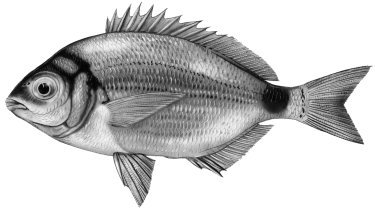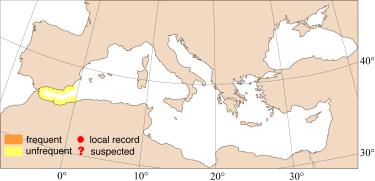
|
Relevant synonyms
Misidentification
Meristic formula
|
|
| drawing : Tuvia Kurz |
|
SHORT
DESCRIPTION
color :
silvery grey, with head darker. Dark saddle on the caudal peduncle, and dark spot at the origin of lateral line. Small dark spot more or less shaded at the upper pectoral axil. Fins greyish. Eyes grey. Juveniles with 5 large transverse dark stripes.
size :
common 10-15 cm in Mediterranean (max. 35 cm in the Atlantic). |
DISTINGUISHING CHARACTERISTICS
BIOLOGY / ECOLOGY
habitat :
inshore waters (mainly between 5 and 50 m depth), over sand or muddy bottom and seagrass beds. |
|
1st
MEDITERRANEAN RECORD
|

|
|
DISTRIBUTION
* Note: according to Matallanas et al. (1981), some specimens of this species were previously caught off Málaga and Ceuta by Lozano-Rey, but misidentified as Diplodus annularis. |
ESTABLISHMENT SUCCESS
speculated reasons for success :
|
|
|
MODE OF
INTRODUCTION |
IMPORTANCE TO
HUMANS |
|
KEY
REFERENCES
|
 Diplodus senegalensis
Diplodus senegalensis